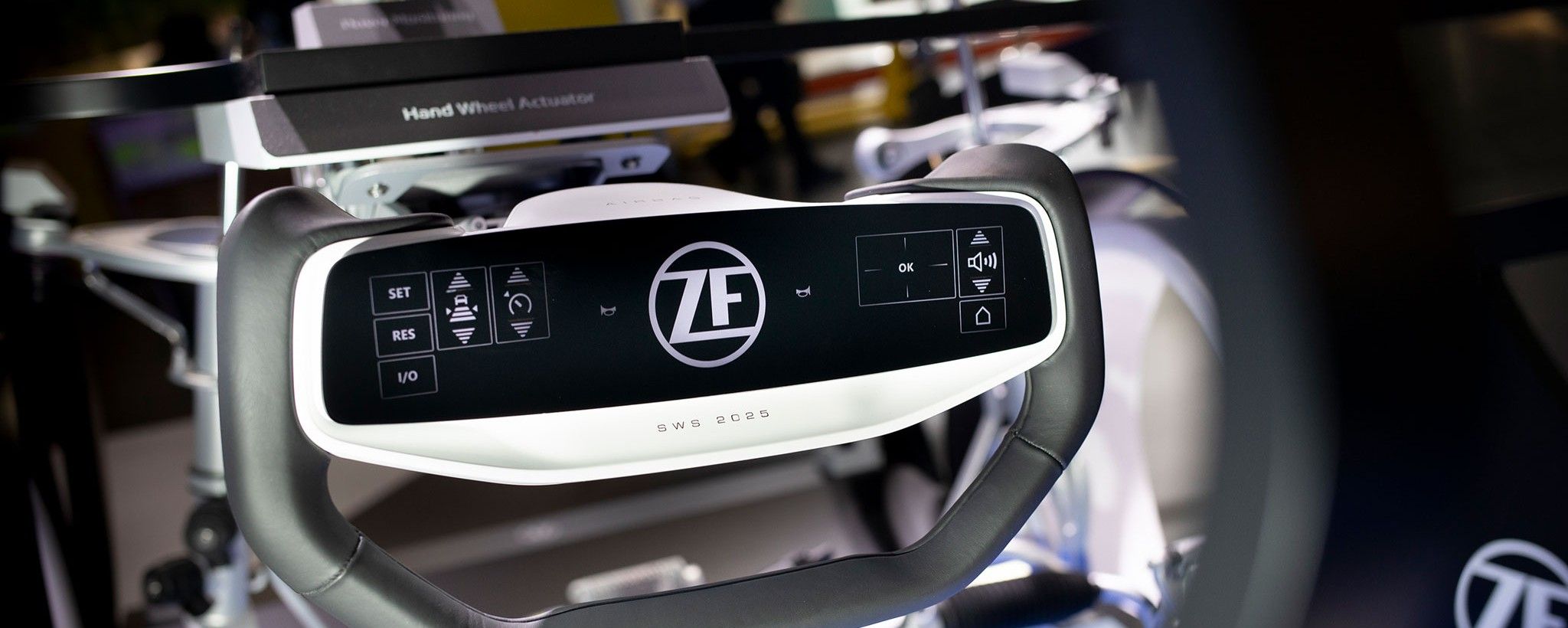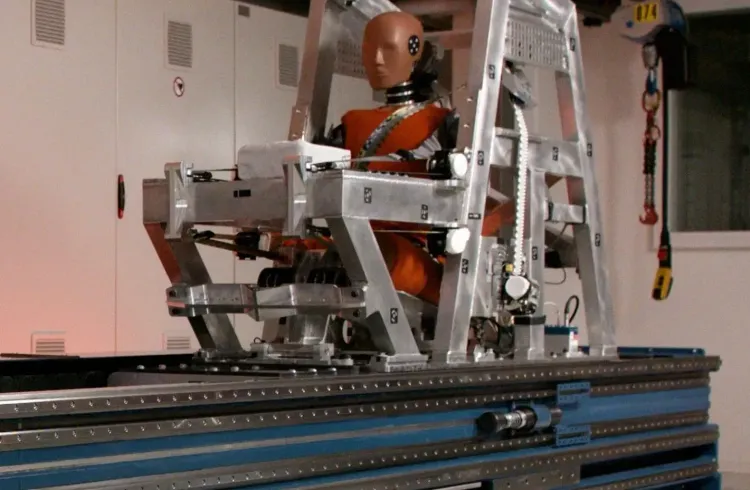From the outside, next generation steering wheels are multifunctional, communicative and emotional. Inside, there are sensors, software and electronics. ZF strives to make this important control instrument fit for the future.
You drive a car, you normally grab the steering wheel, then you take your seat. While driving, your hands don't touch anything longer than the steering wheel. The steering wheel is the first interior contact and one of the central human-machine interfaces (HMI): You "get behind the wheel" and you keep your vehicle "under control" with it. "Some users assess the quality of the entire vehicle based on the steering wheel alone," says Marc Schledorn, Senior Manager of steering wheel systems advanced development at ZF.
Even if the share of autonomous shuttles and taxis increases in the coming decade, the non-automated or semi-automated passenger cars and commercial vehicles will remain in existence for a long time to come – as will the steering wheel. However, its form and function are changing. The steering wheel will need to meet new vehicle manufacturer and customer requirements. These changes mainly come from the areas of interior design, highly automated driving and safety, as well as legal and market requirements.
What will it look like?
Whether for more space (such as in electric cars), a clearer view of the displays, or both, the steering wheel diameter continues to shrink. Since the 1950s, supporting power steering systems in sporty cars enabled ever smaller steering wheels. Steer-by-wire, similar to what is used in aircrafts (fly-by-wire), will enable much more. With steer-by-wire, the vehicle wheels and the steering wheel are no longer mechanically connected so the steering wheel does not move while an autopilot is in control. Instead, the electronically controlled actuators take care of the wheel's steering angle. As a result, the steering wheel shape no longer has to follow the traditional steering function. Theoretically, at least.
In practice, the ZF steering wheels of the foreseeable future will remain round to rectangular, with all variants in between – from partially flattened to octagonal. These closed steering wheel rim shapes have proven successful in the past; they are familiar to the driver and ergonomic. The space between the rim will change significantly; however, with various control elements.
What will its function be?
On this central control element, the familiar steering wheel buttons can be imitated in virtually any function, shape and color. "The vehicle manufacturer will decide about the exact function. However, ZF offers significant design flexibility," says the ZF developer. As a result, a single steering wheel system could soon be sufficient for OEMs to give different platform vehicles the brand and unique characteristics that differentiate OEM models.
New display and illumination options can also be found on the rim surface. All in all, they can help promote safety and clear communication between the vehicle and the human driver: for example, by sending supplementary warning signals when the electronic assistants detect danger. Or by signaling with red illumination during automated driving that the human driver has to regain control of the vehicle. Whether the driver actually grabs the steering wheel is detected by the steering wheel rim with the Hands On/Off Detection (HOD). In passenger cars, this is already state-of-the-art; in trucks, it will be coming soon.
The steering wheel illumination will be almost as important for the interior design as it is for safety. These features are particularly popular in Asian markets. "Digitalized vehicles are a decisive image and prestige factor," says Schledorn.
How will it feel?
Tangible seams, protruding rotary and push buttons, and the striking smell of leather - these features will not be as prominent in future steering wheel generations. The general trend is "seamless design" and must be understood literally. The rim forms a closed unit that converges into the smooth, central control element with virtual buttons.
What's behind this?
Software is the basis for the buttons and displays being configured individually – whether by the vehicle manufacturer or the drivers themselves. Each future ZF steering wheel must be pre-programmed like this. It also provides the basis for displaying so-called on-demand functions via the steering wheel. "Traffic jam assistants in rental cars would be an example," explains Schledorn. The integrated software is designed to ensure that the steering wheel and the other HMI systems in the vehicle communicate smoothly.
Sensor mats under the cover enable the HOD function. Advanced steering wheels do this across several zones. They not only recognize whether the driver grabs the steering wheel, but also where. Electronic Control Units (ECUs) process the information and send commands. Reduction is also the motto here: "So far, up to three ECUs have been used. In the next generation of vehicles, only one control unit that is correspondingly more powerful and seamlessly integrated into the superordinate electronics architecture of the vehicle could be sufficient to support advanced steering wheel electronics," says Marc Schledorn.
And after that?
So-called kinematic steering wheels will fold and literally retreat into the dashboard. Aircraft-like horns or handlebars with only one handle left and right are reminiscent of Formula 1. However, such steering wheel designs are linked to a distant vision: Highly automated driving or steering systems with steer-by-wire technology enable new design freedom. So the steering wheel will still be around in the vehicle for quite a while.
ZF as steering wheel manufacturer
Big on the steering wheel market
Even if the ZF logo is not visible, every fourth new passenger car is equipped with a ZF steering wheel. After all, ZF, has great expertise in this field. With electric power steering systems, airbags, electronics and software, the ZF also covers closely related fields of expertise in-house, positioning the company to offer integrated technology for the future.


Achim Neuwirth has been writing for ZF since 2011. He has specialized in writing texts about all kinds of car-related topics: from vehicles to the technology behind them, to driving and traffic.
Next Stories

The Seat Belt That Warms And May Increase Range
A heated seat belt provides occupants with warmth in cold temperatures and may help e-vehicles get ahead. ZF’s latest innovation has an integrated technology that weaves the heating conductors into the seat belt structure.




